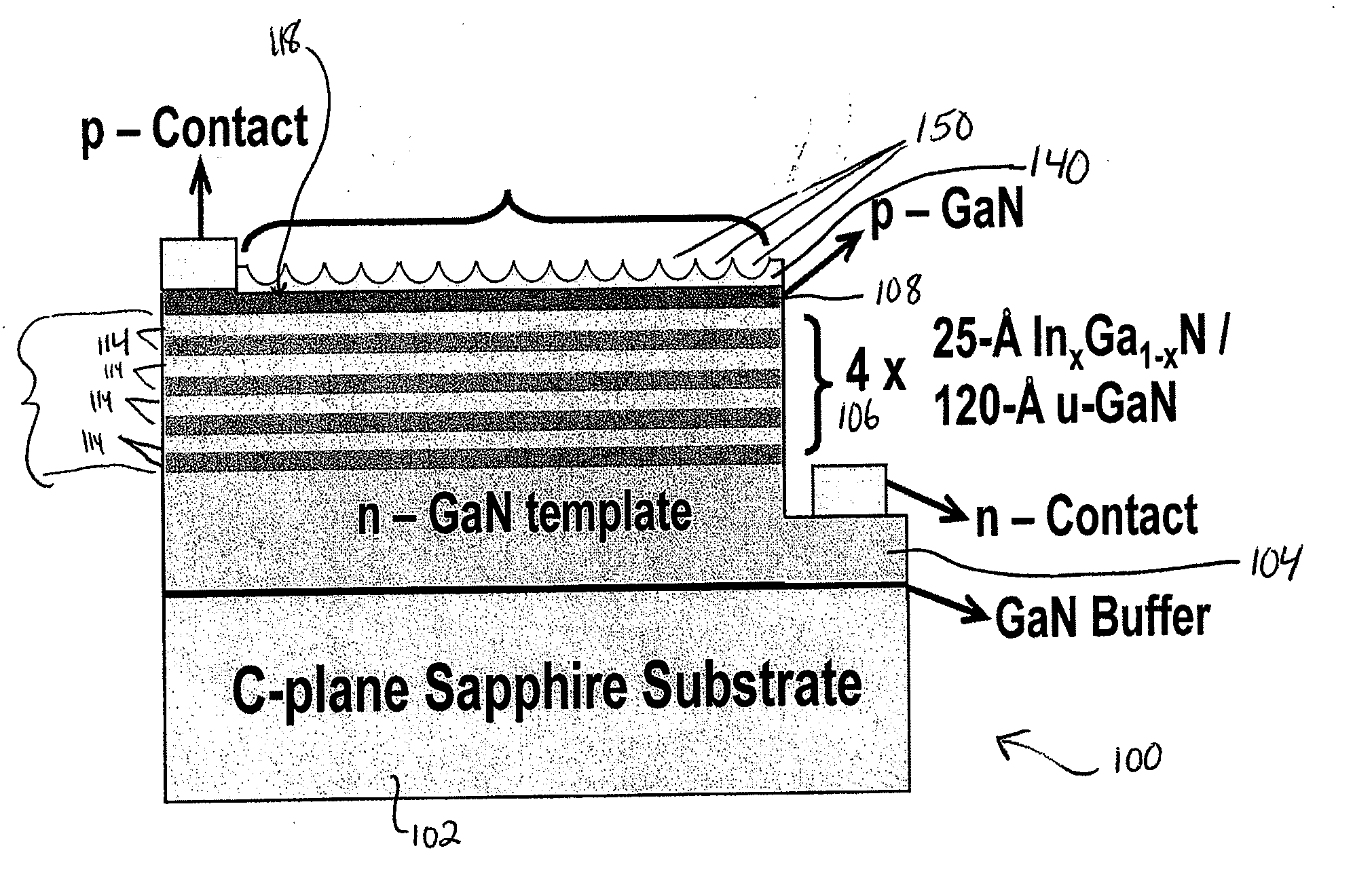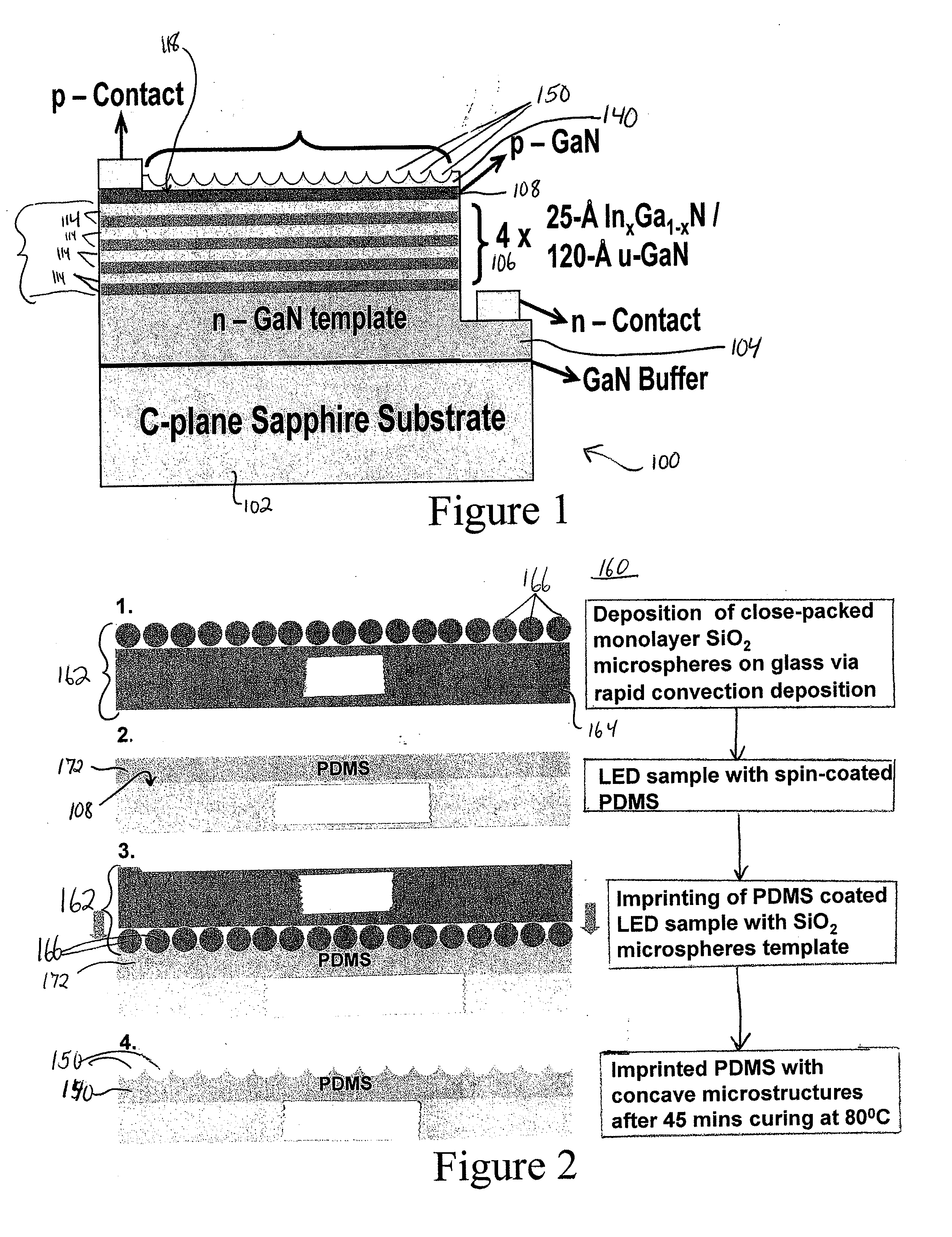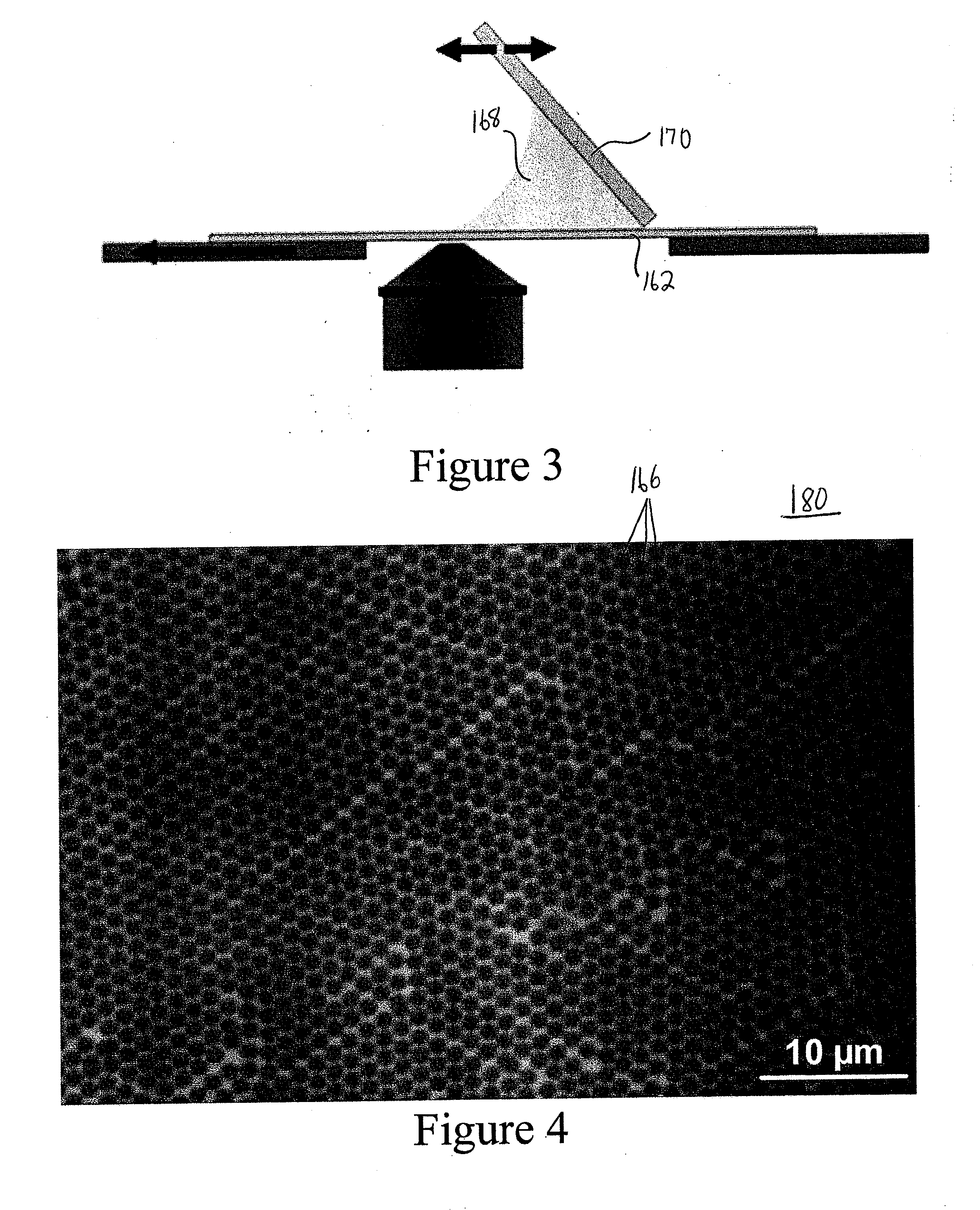Semiconductor light-emitting devices having concave microstructures providing improved light extraction efficiency and method for producing same
- Summary
- Abstract
- Description
- Claims
- Application Information
AI Technical Summary
Benefits of technology
Problems solved by technology
Method used
Image
Examples
examples
[0048]In these Examples, a monolayer of SiO2 microspheres was first deposited on a glass slide using the low-cost rapid convective deposition technique, consistent with the schematic of the rapid convective deposition technique shown in FIG. 2. The deposition blade 170 and the glass slide 162 forms a wedge-shaped corner. 10 μL of the monosized SiO2 colloidal suspension was injected to a corner between the deposition blade 170 and substrate 162. The deposition blade was then swept across the glass slide with a linear motor. Deposition speed was varied to optimize deposition of a monolayer SiO2 microspheres. A confocal laser scanning micrograph (CLSM) of the monolayer SiO2 microsphere arrays on the glass substrate is shown in FIG. 4.
[0049]To form the concave microstructures on top of the LED structure, in this example the LED wafer was pre-patterned with 3.6 μm thick photoresist (PR 1813) to cover the p- and n-metal contacts of the LEDs. The p-metal for the LEDs used in this experimen...
PUM
 Login to View More
Login to View More Abstract
Description
Claims
Application Information
 Login to View More
Login to View More - R&D
- Intellectual Property
- Life Sciences
- Materials
- Tech Scout
- Unparalleled Data Quality
- Higher Quality Content
- 60% Fewer Hallucinations
Browse by: Latest US Patents, China's latest patents, Technical Efficacy Thesaurus, Application Domain, Technology Topic, Popular Technical Reports.
© 2025 PatSnap. All rights reserved.Legal|Privacy policy|Modern Slavery Act Transparency Statement|Sitemap|About US| Contact US: help@patsnap.com



